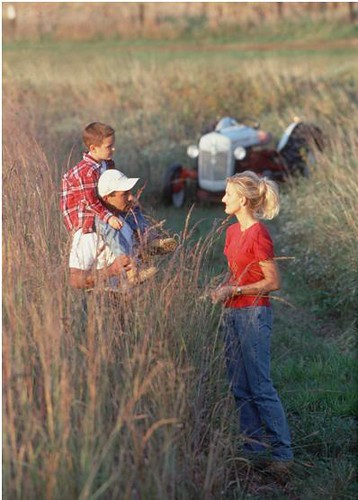
This post is part of the Science Tuesday feature series on the USDA blog. Check back each week as we showcase stories and news from the USDA’s rich science and research portfolio.
What are U.S. farms like? Are they largely family businesses, or corporate operations? Describing farms is challenging because they vary in size and other characteristics, ranging from very small retirement and residential farms to businesses with sales in the millions of dollars. Descriptions based on U.S. averages hide much of the variation.
My Agency, the Economic Research Service, prepares a periodic series of reports on family farms that provide detailed information for policy makers, others interested in farm policy, and the general public. The data in the reports come from a scientifically designed annual survey, USDA’s Agricultural Resource Management Survey. The survey covers all types of farms, and is designed to accurately represent farms and farm households, including financial conditions and production practices.
Results from the Family Farm Report, 2010 Edition provide a snapshot of farming today. In preparing this report, we economists―like other scientists―do a considerable amount of classifying. Most U.S. farms—approximately 98 percent—are family farms, where the farm operator and relatives own the majority of the business. The remaining 2 percent are nonfamily, but only a small fraction of these (15 percent) are corporations. Other types of nonfamily farms include farms equally owned by unrelated business partners, and farms operated by a hired manager for a family of absentee owners.
The farm count is dominated by small family farms―those with annual sales below $250,000. Small family farms account for 88 percent of all farms and for the bulk of farm assets (64 percent), including land. Residential farms—where operators report off-farm work as their main occupation—account for 51 percent of small farms. Retired farmers, still operating on a reduced scale, make up another 21 percent.
Small family farms, however, contribute only 16 percent to farm production. Large-scale family farms account for another 66 percent, and nonfamily farms for the remainder. Farms with sales of $1 million or more account for just over half of total farm production.
Households operating small family farms often report losses from farming and rely on off-farm work for their livelihood. As a result, policies affecting the general economy are important to them.
A 12-page brochure is available.
